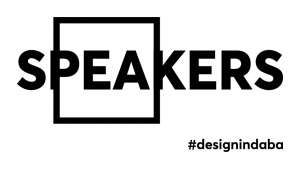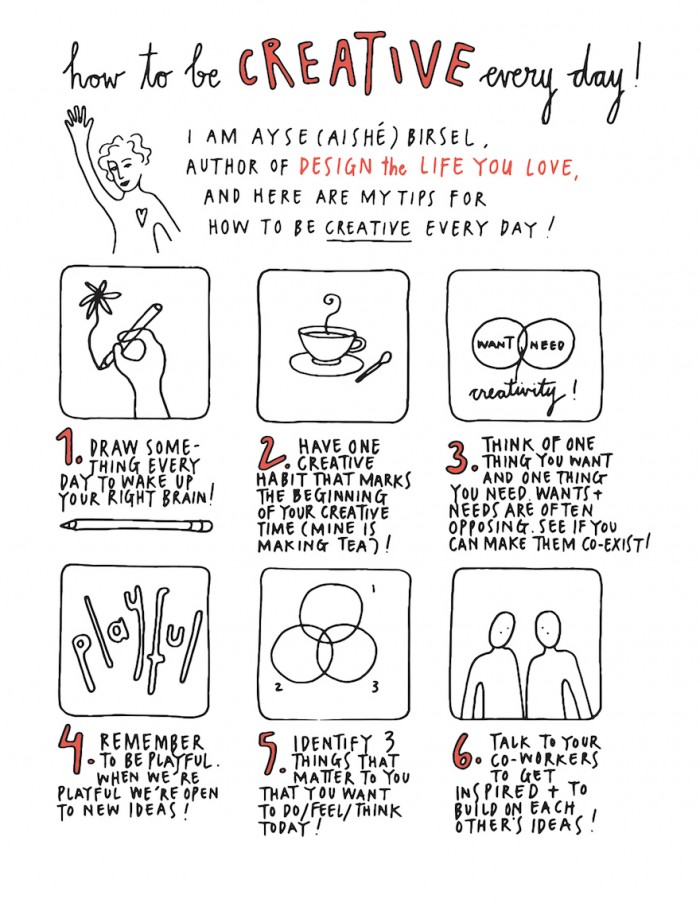From the Series
Your own life is your biggest design project. Ayse Birsel, half of human-centred product design duo Birsel + Seck and the author of Design The Life You Love, shares her tips from very creative people to help inspire your every day. Birsel promotes the use of design thinking to create a productive and satisfying life. We advise you read the book and start channeling some of her playful and practical methodology into your own life, and even better – come and see Ayse Birsel talk at Design Indaba Conference 2017. In the meantime, from Birsel herself, here are seven creative habits for you to try.
Here are 7 ways to find, nurture and maintain a creative habit which will invariably (speaking from experience and from watching my friends at work) increase your creative output.
1. Find the right time
My creative time is dawn. I wasn't always a morning person but, after I had my kids, I taught myself to be one. Early morning is quiet and free of distractions. 5am to 6am is a short, precious window of time that cannot be wasted with dilly dallying (or email), plus my brain is fresh but not awake enough to be too judgmental (being judgmental gets in the way of creativity). And I am better for it, the rest of the day.
So create a time: find your time, with little or no distractions (no email, phone, co-workers, kids) and make it regular, same time, same place, to think creatively everyday. It takes about three to four weeks to make it into a habit, after which you can't do without it.
2. Set a limit
English novelist Graham Greene wrote 500 words every day, stopped and didn't think about it until the next morning. I've loved this idea ever since I read Michael Korda's profile of Greene in the New Yorker in 1996, imagining his life between those 500 words feeding his writing. Michael Korda noted that,
"Greene's self-discipline was such that, no matter what, he always stopped at five hundred words, even if it left him in the middle of a sentence."
Determine a limit: number of pages, words, sketches, images, amount of time – and do exactly that much creativity per day. Watch them add up, to an article, a book, a product, a film.
3. Have a starting cue
Choreographer Twyla Tharp hops in a cab at 5am every morning to go to her gym. She is half asleep but by the time she is in the cab it is too late, she is in forward motion to her creative place. I make tea as soon as I am out of bed and by the time I pour myself a cup with my cookie (a reward), I'm ready to open my sketchbook and start sketching.
Create your entry point – making tea, putting on music, wearing a hat, walking the dog, hopping into a cab – that literally pushes you into your creative habit and marks the beginning of your creative time.
4. Start humble
Starting is half the battle and starting small, humbly, is really the only way to start. I started this article a few days ago with a title, a few sentences and some jumbled notes. And that makes all the difference because once you've started you can continue. It is out of your head and into the world.
Have the creative habit of starting small – build little by little from there. Waiting for the big idea, fully formed and ready, is a myth. At least in my case (and I believe the same is true for most of us)!
5. Go for a walk
Beloved illustrator and author Maira Kalman makes a great case for walking, her creative habit, "Walking clears your brain and fills your soul and makes it quite happy actually." And she is not alone – Steve Jobs of course was famous for his walks.
Take a walk – alone or with someone to reflect, think through ideas, get inspired and observe life around you.
6. Give yourself a sabbatical
Graphic designer and typographer Stefan Sagmeister has many creative habits, but the one that is quite unique is his creative sabbatical. Stefan takes a year off from his commercial clients every seven years and uses his sabbatical to think creatively on his own time. His beautiful film, the Happy Film, which explores three things that make people happy – meditation, cognitive psychology, drugs – started during a sabbatical and took him an epic seven years to finish, bringing him to his next year off!
Give yourself a creative sabbatical – you decide how much time you can set aside: maybe not a whole year but maybe a month, or 3 hours every Friday afternoon, or every 2 weeks. This is your time to doodle, research, do a project that interests you. No clients, no boss, no deadlines.
7. Wait until you run out of things to do
Richard Ford is one of my favorite writers. In a 1999 New York Times article, he said that he does nothing for long periods of time until he runs out of other things to do. Then he starts writing.
"I simply choose to do it, often when I can't be persuaded to do anything else; or when a dank feeling of uselessness comes over me, and I'm at a loss and have some time on my hands, such as when the World Series is over." -Richard Ford
I love this creative habit even though I am ill-suited for it. But for all of you who can afford to do it, it's worth a consideration. Especially if the results will be to the level of Ford's art.
Don't do anything creative – use that time to reflect, live life, collect material and knowledge intentionally or intuitively for the next round. Until you run out of things to do. Then be creative. Fully and with no holes barred!
My creative habit is a combination of all of the above. I wake up early, make tea, do a little something creative every day for an hour, go for walks in New York City, treat my vacations as sabbaticals and even have periods where I do nothing creative until I crave being creative again.
How about you? What is your creative habit?









